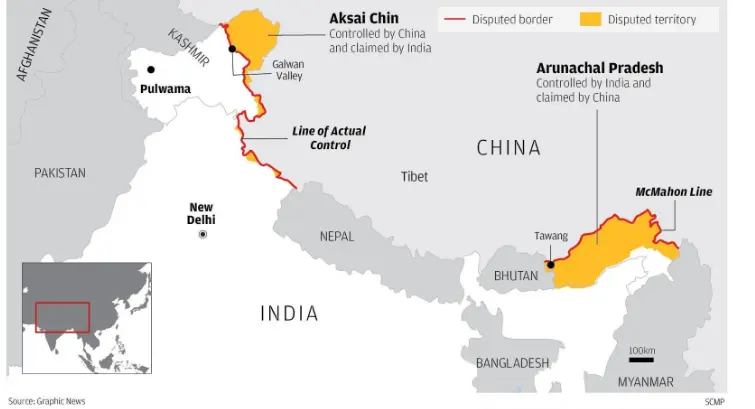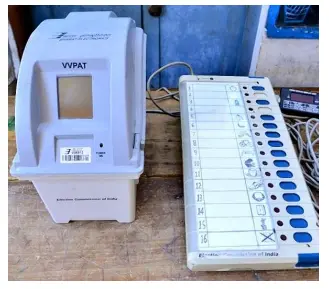Tuesday, 2nd April 2024
Madhya Pradesh's 6 New Sites Listed on UNESCO's Tentative World Heritage Sites List
In News: Six new sites from Madhya Pradesh have recently been included in the Tentative UNESCO list of World Heritage Sites (WHS).
Key Features of Sites Recently Added to Tentative UNESCO List of World Heritage Sites
Gwalior Fort
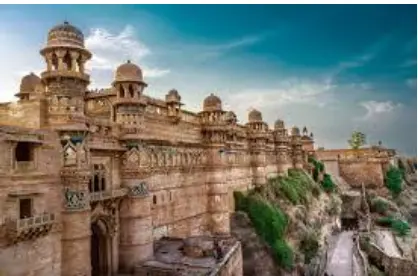
- Gwalior Fort, perched atop a hill, is renowned not only for its formidable walls but also for offering breathtaking panoramic views of the surrounding city.
- According to historical accounts, the fort's foundations trace back to the 6th century AD, attributed to Rajput warrior Suraj Sen.
- Over the centuries, Gwalior Fort has been witness to a tumultuous history of invasions, reconstructions, and changes of rulers.
- Notable among its structures are ancient temples such as Teli ka Mandir, Chaturbhuj temple, Sas Bahu temples, and the Gurdwara Data Bandi Chhor, each adding to its cultural significance.
- Its strategic location atop basalt rock hills is underscored by its mention in old Sanskrit inscriptions as Gopachala or Gopagiri.
Historical Group of Dhamnar

- The Historical Group of Dhamnar encompasses a collection of 51 rock-cut caves, stupas, chaityas, and dwellings dating back to the 7th century AD.
- Among its treasures is a monumental statue of Gautam Buddha depicted in the nirvana pose, serving as a significant highlight.
- Noteworthy caves like Bari Kacheri and Bhima Bazar, located on the northern bank, carry historical importance and architectural splendor.
- Though historically known as Chandananagari-mahavihara, the site's modern name, Dhamnar, is thought to possibly originate from the Shaivite term 'Dharmanatha,' reflecting its cultural heritage.
Bhojeshwar Mahadev Temple

- Commissioned by Raja Bhoj in the 11th century, the Bhojeshwar Mahadev Temple stands as a testimony to ancient architectural prowess and devotion to Lord Shiva.
- Its grandeur lies not only in its massive Linga carved from a single stone but also in its intricate carvings and sculptures.
- The temple follows the Bhumija style of architecture, characterized by its towering shikhara and ornate decorations, with elements also influenced by the Dravidian style.
Rock Art Sites of the Chambal Valley
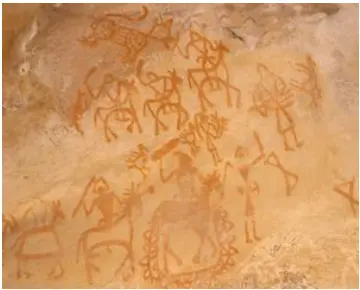
- The Chambal Valley boasts the world's largest concentration of rock art sites, providing a fascinating glimpse into ancient human life and cultural evolution.
- These sites, scattered across Madhya Pradesh, Rajasthan, and Uttar Pradesh, depict scenes from various historical periods and civilizations.
- Among the notable locations are Bhimlat Mahadev, Chatturbhuj Nath Nala, and Garadia Mahadev, each contributing to the rich tapestry of rock art heritage in the region.
- The artistry flourishes amidst the hilly terrain of the Vindhyan, Satpura, and Kaimur ranges, blending seamlessly with the natural landscape.
Burhanpur's Khooni Bhandara
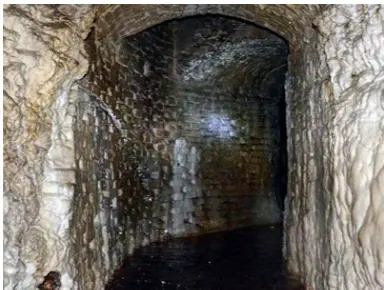
- Burhanpur's Khooni Bhandara stands as an intriguing testament to ancient water management systems, consisting of eight underground waterworks.
- Constructed by Abdurrahim Khankhana using the Persian qanat approach, this engineering marvel served as a lifeline for the historical city.
- During the Mughal era, technologies like Persian Qanats were imported to India, reflecting the cultural exchange and innovative engineering practices of the time.
- The unique mineral-rich water, tinged with a hint of red, gave rise to the name "khooni" (bloody), adding to the site's mystique and historical significance.
Gond Memorial of Ramnagar, Mandla
- The Gond Memorial of Ramnagar, Mandla, pays homage to the rich cultural heritage of the Gond tribe, historically prominent in the Central Provinces of India.
- Comprising monuments such as Moti Mahal, Raibhagat ki Kothi, Suraj Mandir, Begum Mahal, and Dalbadal Mahal, the cluster reflects the architectural and historical legacy of the region.
- Situated in the heart of what was once known as Gondwana, the site offers a glimpse into the diverse tapestry of India's cultural heritage, spanning across present-day Madhya Pradesh, Chhattisgarh, and Maharashtra.
|
UPSC Previous Year Questions Prelims (2021) Q. Which one of the following statements is correct? (a) Ajanta Caves lie in the gorge of Waghora river. (b) Sanchi Stupa lies in the gorge of Chambal river. (c) Pandu-lena Cave Shrines lie in the gorge of Narmada river. (d) Amaravati Stupa lies in the gorge of Godavari river. Ans: (a) |
Source: ET
Energy Inefficiency in India's Construction Sector
In News: India's booming construction sector presents both economic prospects and enhanced living conditions, yet it also presents notable environmental hurdles. In this context, tackling energy inefficiency in residential buildings becomes imperative.
Importance of Addressing Energy Inefficiency in India's Construction Sector
- Rising Energy Demand and Urbanization
- India's economic growth and urbanization have led to a surge in energy and cooling demand.
- Increased urbanization, coupled with the phenomenon of heat islands, exacerbates the need for energy-efficient buildings.
- Environmental Impact
- The construction sector is a significant contributor to energy consumption and greenhouse gas emissions.
- Addressing energy inefficiency is essential to mitigate environmental degradation and combat climate change.
- Thermal Comfort and Well-being
- Energy-efficient buildings offer improved indoor air quality, thermal comfort, and natural lighting.
- Enhancing occupant well-being and comfort is crucial for sustainable urban development.
Initiatives Regarding Energy Efficiency in the Construction Sector
- Eco-Niwas Samhita (ENS)
- Introduced by the Ministry of Power, ENS promotes energy efficiency in residential buildings through the Energy Conservation Building Code for Residential Buildings (ECBC-R).
- Focuses on optimizing building design and construction to reduce energy consumption and environmental impact.
- Energy Conservation Building Code (ECBC)
- Set by the Bureau of Energy Efficiency, ECBC establishes minimum energy standards for commercial buildings.
- Aims to achieve significant energy savings and promote renewable energy integration in building design and operation.
- Energy Conservation (Amendment) Act, 2022
- Transitioning ECBC into the Energy Conservation and Sustainability Building Code to incorporate measures for sustainability and clean energy deployment.
- Mandates compliance with ECO Niwas Samhita for residential building energy efficiency.
- NEERMAN Awards
- Recognizes buildings compliant with ECBC standards, encouraging energy-efficient construction practices.
- Part of the 'Azadi Ka Amrit Mahotsav' initiative to promote sustainable development.
- BEE Star Rating for Buildings
- Evaluates energy efficiency in commercial buildings through a star rating system.
- Encourages building owners to adopt energy-efficient practices and technologies.
- Green Rating for Integrated Habitat Assessment (GRIHA)
- National rating system for green buildings adopted by the Ministry of New and Renewable Energy.
- Promotes sustainable building design and construction practices to minimize environmental impact.
- Indian Green Building Council (IGBC)
- Facilitates sustainable built environment initiatives in collaboration with the Confederation of Indian Industry.
- Aims to position India as a global leader in sustainable construction by 2025.
Strategies for Achieving Energy Efficiency in the Construction Sector
- Utilization of Autoclaved Aerated Concrete (AAC) Blocks
- AAC blocks offer superior thermal efficiency compared to traditional materials like red bricks and monolithic concrete.
- Promoting the use of AAC blocks can enhance energy efficiency and reduce cooling demand in buildings.
- Exploration of Innovative Building Materials
- Collaboration with sustainability experts to explore and adopt innovative building materials.
- Emphasis on materials with low embodied energy and high thermal performance for sustainable construction.
- Addressing Sustainability Concerns
- Awareness and action on high embodied carbon materials like monolithic concrete.
- Encouragement for manufacturers to develop sustainable and resilient building solutions.
- Promotion of Sustainable Practices
- Adoption of cost-effective and durable building materials to improve energy efficiency and environmental sustainability.
- Cultivation of a culture of sustainability in the construction industry.
- Adoption of Smart Building Systems
- Integration of smart building systems, artificial intelligence, and IoT technologies to optimize energy consumption.
- Deployment of intelligent HVAC systems and 3D printing for energy-efficient building components.
|
UPSC Previous Year Questions Prelims (2015) Q. With reference to ‘fly ash’ produced by the power plants using coal as fuel, which of the following statements is/are correct?
Select the correct answer using the code given below: (a) 1 and 2 Ans: (a) Mains (2021) Q. “Investment in infrastructure is essential for more rapid and inclusive economic growth.” Discuss in the light of India’s experience. |
Source: TH
Section 43 b (h) of the Income Tax Act
In News: A new regulation, Section 43B(h) of the Income Tax (IT) Act, will be implemented from April 1 to ensure timely payments to the Micro, Small, and Medium Enterprises (MSME) sector.
Section 43B(h) of the IT Act
- Introduction and Implications
- Added through the Finance Act 2023, Section 43B(h) of the IT Act mandates that payments owed to MSMEs registered under UDYAN are deductible only upon actual payment.
- This amendment affects tax liability by disallowing deductions for unpaid expenses to MSMEs, emphasizing timely payments.
- Applicability and Payment Deadlines
- Applies to transactions involving purchases from MSMEs under the MSMED Act, 2006.
- Requires companies, sole proprietorships, partnerships, or LLPs to settle payments with MSMEs within specific timeframes.
- For MSMEs with written agreements, payment should occur within 45 days; otherwise, it's due within 15 days.
- Objective and Benefits
- Encourages timely payments from larger entities to MSMEs, fostering sustainability and growth for the latter.
- Provides MSMEs with enhanced bargaining power and reduces disputes, promoting a stable business environment.
- Advantages for Larger Enterprises
- Enables tax planning by claiming deductions for payments to MSMEs in the same fiscal year, thereby reducing tax liabilities.
- Promotes compliance and transparency in financial practices, contributing to a responsible business ecosystem.
Concerns Regarding Implementation
- Request for Deferral
- Traders' bodies have urged the Finance Minister to postpone the clause's enforcement until April 2025 due to ambiguity in its application.
- Challenges Faced by Retailers
- Retailers typically operate on longer credit cycles of 90-120 days, making adjustment to a 45-day payment cycle challenging.
- Many reputable retailers adhere to extended payment periods, leading to disruptions in their business models.
- Impact on MSMEs
- MSME apparel manufacturers are anticipated to face losses of Rs 5,000-7,000 crore due to cancelled orders from retailers.
- Some retailers are contemplating returning unsold merchandise to manufacturers to avoid payment obligations, further impacting MSMEs.
Source: BS
Core Sector
In News: In February 2024, India's core sector output experienced a remarkable upswing, reaching a three-month peak of 6.7% growth. This surge was predominantly fueled by substantial rises in coal, natural gas, and cement production.
Core Sector Overview
- The core sector in India encompasses eight key industries: coal, crude oil, natural gas, refinery products, fertilizers, steel, cement, and electricity.
- It serves as a vital indicator of the overall health of the Indian economy, with strong growth signaling a positive economic outlook.
Significance of Core Sector
- The performance of the core sector is crucial for assessing the industrial and economic performance of the country.
- Core industries like steel and electricity have significant interconnections with other sectors, impacting the entire economy.
- These industries are essential for infrastructure development, such as building roads, bridges, and power plants.
Core Sector Growth
- Core sector growth refers to the increase in output/production from the core industries over a specific period.
- It is calculated by combining the growth rates of individual industries, using their respective weights in the Index of Core Industries (ICI).
Index of Eight Core Industries (ICI)
- The ICI comprises various components reflecting the performance of India's industrial sector, including coal, electricity, crude oil, cement, natural gas, steel, refinery products, and fertilizers.
- Each component is assigned a weightage based on its significance in the overall industrial landscape.
- The ICI is released monthly with a time lag of one month and serves as a key economic indicator for policymakers and stakeholders.
Recent Trends in the Core Sector
- In February 2024, India's core sectors witnessed a notable uptick in output growth, reaching 6.7%.
- Double-digit increases were observed in coal, natural gas, and cement production, driving overall growth.
- However, fertilizers production contracted by 9.5%, marking a significant decline.
- Despite this, cumulative growth for the fiscal year 2023-24 stood at 7.7%, surpassing the previous year's growth rate of 6.8%, indicating resilience and positive momentum in industrial activity.
|
UPSC Previous Year Questions Prelims (2015) Q. In the ‘Index of Eight Core Industries’, which one of the following is given the highest weight? (a) Coal production Ans: (b) Mains (2017) Q.1 “Industrial growth rate has lagged behind in the overall growth of Gross-Domestic-Product (GDP) in the post-reform period” Give reasons. How far are the recent changes in Industrial Policy capable of increasing the industrial growth rate? Mains (2014) Q.2 Normally countries shift from agriculture to industry and then later to services, but India shifted directly from agriculture to services. What are the reasons for the huge growth of services vis-a-vis the industry in the country? Can India become a developed country without a strong industrial base? |
Source: TH
Central Administrative Tribunal
In News: Recently, the Allahabad High Court determined that an appeal challenging a decision of the CAT in its contempt jurisdiction under Section 17 of the Administrative Tribunals Act 1985 falls under the jurisdiction of the Supreme Court.
About Central Administrative Tribunal (CAT)
- Establishment and Mandate
- Established under Article 323-A of the Constitution.
- Mandated to adjudicate disputes and complaints regarding recruitment and conditions of service in public services and posts related to Union affairs or other authorities under government control.
- Jurisdiction
- Governed by the Administrative Tribunals Act, 1985.
- Jurisdiction extends to organizations notified under Section 14(2) of the Act.
- Has authority over Ministries, Departments, and around 214 organizations.
- Structure
- Consists of 17 Benches and 21 Circuit Benches across India.
- Each bench comprises one Judicial Member and one Administrative Member.
- Chairman and Members enjoy conditions of service equivalent to a High Court Judge.
- Powers
- Empowered to handle service matters of parties covered by the Administrative Tribunals Act.
- Guided by principles of natural justice.
- Not bound by Civil Procedure Code; can frame own rules.
- Possesses authority to handle contempt cases similar to a High Court.
Source: LL
Red Sea - Edukemy Current Affairs
In News: In recent times, global trade has faced significant challenges, largely attributed to disruptions along one of the vital maritime routes passing through the Red Sea.
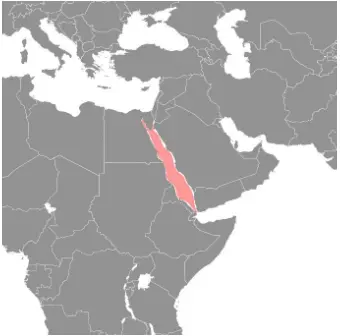
Overview of the Red Sea
- Location and Characteristics
- The Red Sea is a semi-enclosed inlet of the Indian Ocean situated between Africa and Asia.
- Known for being one of the world's warmest seas.
- Connectivity
- Connected to the Arabian Sea and the Indian Ocean to the south through the Gulf of Aden and the Bab El-Mandeb strait.
- Bifurcated by the Sinai Peninsula into the Gulf of Aqaba and the Gulf of Suez in the north, where it connects to the Mediterranean Sea via the Suez Canal.
- Bordering Countries
- Yemen and Saudi Arabia to the east.
- Egypt to the north and west.
- Sudan, Eritrea, and Djibouti to the west.
- Geographical Features
- Covers approximately 438,000 km2 with a length of about 2,250 km.
- Maximum width of 355 km.
- Deepest point is 3,040 m at the central Suakin Trough, with an average depth of 490 m.
- Contains some of the world's hottest and saltiest seawater.
- Islands
- Includes Tiran Island near the mouth of the Gulf of Aqaba, and Shadwan Island at the entrance of the Gulf of Suez.
- Importance
- Acts as a crucial maritime route connecting Europe and Asia through the Suez Canal.
- Among the most heavily traveled waterways globally, facilitating significant maritime traffic.
Source: TH
Statins
In News: A study conducted by researchers in China has discovered that administering ursodeoxycholic acid (UDCA) can help prevent the tendency of statins to induce glucose intolerance and diabetes.

About Statins
- Definition: Statins are prescription medications used to normalize cholesterol levels.
- Mechanism of Action: They function by inhibiting the liver enzyme responsible for cholesterol production.
- Impact of High Cholesterol: Elevated cholesterol levels can lead to arterial plaque buildup, resulting in narrowed or hardened arteries. This condition increases the risk of heart attacks or strokes.
- Effect on LDL Cholesterol: Certain statins can reduce LDL (low-density lipoprotein) cholesterol by 50% or more. LDL is often termed "bad" as it accumulates in arteries, impeding blood flow.
- Benefits: Statins are associated with a decreased risk of heart disease and stroke. Additionally, they may lower the risk of specific blood clot formations.
- Interactions and Side Effects: Statins can interact with other medications, potentially causing severe side effects like muscle damage.
Source: TH
Lalit Kala Akademi
In News: The Ministry of Culture has recently restricted the authority of the Chairman of Lalit Kala Akademi (LKA), preventing them from undertaking any "administrative actions."
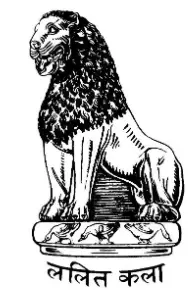
About Lalit Kala Akademi
- Inauguration: Established on 5th August 1954 by Maulana Abul Kalam Azad, the then Minister for Education.
- Registration: Registered under the Societies Registration Act 1860.
- Collection: Preserves and documents a permanent collection showcasing contemporary, modern, folk, and tribal art in India.
- Purpose: India's national academy of fine arts, aimed at promoting and propagating Indian art globally.
- International Promotion: Promotes Indian visual art worldwide through Cultural Agreements and Exchange Programs.
- National Exhibition of Art: Hosts the prestigious annual event showcasing Indian art.
- Funding: Receives funding from the Ministry of Culture.
- Regional Centers: Operates regional centers in Chennai, Lucknow, Kolkata, Bhubaneswar, and Garhi.
- Headquarters: Located in New Delhi.
Source: IE
Atal Tunnel
In News: Recently, fresh snowfall near the Atal Tunnel in Lahaul and Spiti districts led to the blocking of the Manali-Leh highway.

About Atal Tunnel
- Location and Elevation
- Situated in the Pir Panjal Range of the Himalayas, Himachal Pradesh.
- Located at approximately 3,100 meters (10,171 feet) above sea level.
- Former Name
- Initially known as Rohtang Tunnel.
- Purpose and Connectivity
- Connects Manali to Lahaul and Spiti Valley.
- Ensures year-round connectivity, previously disrupted by heavy snowfall for around six months annually.
- Length and Route
- Stretches 9.02 km.
- Passes through Rohtang Pass.
- Portal Locations
- South Portal (SP): Located 25 km from Manali at an altitude of 3,060 meters.
- North Portal (NP): Near village Teling, Sissu, Lahaul Valley, at an altitude of 3,071 meters.
- Tunnel Structure
- Horseshoe-shaped, single tube, double-lane tunnel.
- Roadway width of 8 meters.
- Overhead clearance of 5.525 meters.
- Safety Features
- Semi-transverse ventilation system.
- Emergency exits every 500 meters.
- Evacuation lighting.
- Broadcasting systems.
- Fire hydrants.
Source: HT
Caracal - Edukemy Current Affairs
In News: There has been recent concern about the conservation of the Caracal species.
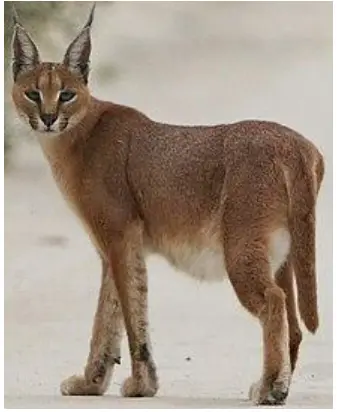
About Caracal
- The caracal is an elusive, primarily nocturnal animal known for its agility and remarkable ability to catch birds in flight.
- In India, it is referred to as "siya gosh," a Persian term meaning "black ear."
- They often utilize abandoned porcupine burrows and rock crevices for maternal dens, while also being found with their young in dense vegetation.
- Distribution
- Caracals inhabit various regions across Africa, the Middle East, Central and South Asia.
- In India, the most suitable habitats for caracals are located in Rajasthan, Gujarat, and Madhya Pradesh, including areas such as Kutch, the Malwa Plateau, the Aravalli hill range, and the Bundelkhand region.
- Habitat
- They are typically found in woodlands, savannahs, and scrub forests, where they can hunt and seek shelter.
- Threats
- Large-scale hunting, illegal trading, and habitat loss pose significant threats to the caracal population.
- Conservation Status
- The caracal is listed under Schedule I of The Wild Life (Protection) Act, 1972, highlighting its importance for conservation efforts.
Source: DTE
ART’s Intervention in HIV/AIDS Treatment
In News: A recent article delves into how Antiretroviral Therapy (ART) plays a pivotal role in the management of HIV/AIDS and the valuable lessons it provides for other public health endeavors.
Introduction to HIV/AIDS
- HIV/AIDS is a viral infection affecting the immune system, leading to reduced ability to fight off infections.
- Left untreated, HIV progresses to AIDS, characterized by severe immune system damage.
Causes and Transmission
- HIV is transmitted through infected bodily fluids, such as blood, semen, vaginal fluids, and breast milk.
- Transmission occurs through sexual contact, sharing needles, childbirth, or rarely, blood transfusions.
Symptoms and Diagnosis
- Symptoms range from flu-like symptoms in the acute phase to severe manifestations in AIDS.
- Diagnosis involves antibody/antigen tests or nucleic acid tests for early detection.
Treatment and Management
- Antiretroviral therapy (ART) involves daily medication to suppress HIV replication and preserve immune function.
- Pre-exposure prophylaxis (PrEP) is for individuals at risk of HIV infection.
Evolution and Mechanism of ART
- ART targets various stages of HIV replication, reducing viral load and preserving immune function.
- Components include NRTIs, NNRTIs, PIs, INSTIs, and entry inhibitors.
Benefits of ART
- Suppresses viral load, slows disease progression, and prevents opportunistic infections.
- Improves quality of life, reduces transmission risk, and enhances overall health outcomes.
Success Factors and Global Efforts
- Early initiatives like the Global Fund aimed at universal access to prevention and treatment.
- Free ART in India led to significant declines in new infections and AIDS-related mortalities.
Challenges and Solutions
- Ensuring sustained supply and availability of ART, particularly in remote areas.
- Continuous training for healthcare staff and integration with other health programs.
- Multi-sectoral approach, political will, and stakeholder engagement for program effectiveness.
National AIDS Control Programme (NACP)
- NACP aims to reduce new infections, AIDS-related deaths, and vertical transmission by 2025.
- Targets include increasing testing, ART coverage, and viral suppression rates.
Conclusion
- Free ART initiative in India has been instrumental in curbing HIV/AIDS epidemic.
- The success of ART program provides valuable lessons for other public health initiatives, such as Hepatitis C treatment.
|
UPSC Previous Year Questions Prelims (2013) Q. Which of the following diseases can be transmitted from one person to another through tattooing?
Select the correct answer using the codes given below: (a) 1 only Ans: (b) |
Source: TH
Share the article
Edukemy’s Current Affairs Quiz is published with multiple choice questions for UPSC exams
MCQ
Get Latest Updates on Offers, Event dates, and free Mentorship sessions.

Get in touch with our Expert Academic Counsellors 👋
FAQs
UPSC Daily Current Affairs focuses on learning current events on a daily basis. An aspirant needs to study regular and updated information about current events, news, and relevant topics that are important for UPSC aspirants. It covers national and international affairs, government policies, socio-economic issues, science and technology advancements, and more.
UPSC Daily Current Affairs provides aspirants with a concise and comprehensive overview of the latest happenings and developments across various fields. It helps aspirants stay updated with current affairs and provides them with valuable insights and analysis, which are essential for answering questions in the UPSC examinations. It enhances their knowledge, analytical skills, and ability to connect current affairs with the UPSC syllabus.
UPSC Daily Current Affairs covers a wide range of topics, including politics, economics, science and technology, environment, social issues, governance, international relations, and more. It offers news summaries, in-depth analyses, editorials, opinion pieces, and relevant study materials. It also provides practice questions and quizzes to help aspirants test their understanding of current affairs.
Edukemy's UPSC Daily Current Affairs can be accessed through:
- UPSC Daily Current Affairs can be accessed through Current Affairs tab at the top of the Main Page of Edukemy.
- Edukemy Mobile app: The Daily Current Affairs can also be access through Edukemy Mobile App.
- Social media: Follow Edukemy’s official social media accounts or pages that provide UPSC Daily Current Affairs updates, including Facebook, Twitter, or Telegram channels.

